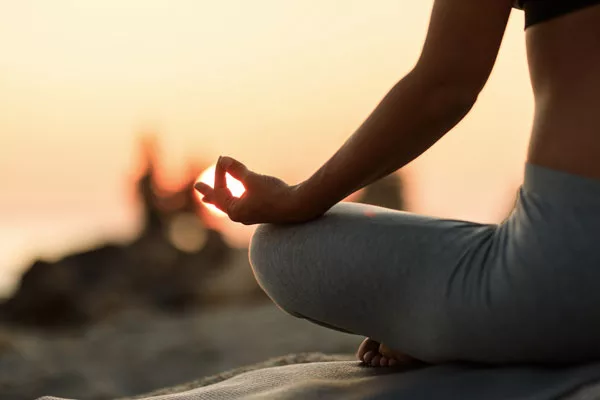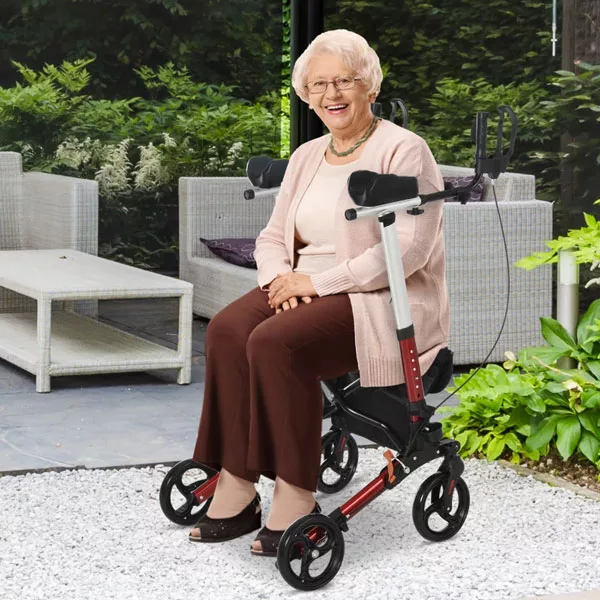Fit in Exercise: The Friendly, Practical No‑Excuses Guide to a Functional Body Despite a 24/7 Busy Life
A personable, research‑backed guide to fit in exercise—simple plans, smart progressions, and habits to build lean, functional strength at home.
If we’re being honest, I didn’t fall in love with fitness in a gym. I fell in love with it in a hallway—doing pushups between meetings, sneaking in lunges while the coffee brewed, and discovering that body fitting exercise fits everywhere life does. No commute, no drama, no “sorry, all treadmills are taken.” Just me, the floor, and a growing sense that this was finally sustainable. That’s the promise of body fitting exercise: it trains you for life, not just for a mirror selfie. And if you want a leaner, stronger, more capable body without making fitness your full‑time job, you’re in the right place.
I’ve tried the all‑or‑nothing approach. It’s exhilarating for two weeks and exhausting by week three. What actually stuck was body fitting exercise: practical, compound movements that respect your time and reward your consistency. It feels less like punishment and more like a “hey, I’ve got your back” from your future self. Let’s make that your normal.
Key Takeaways
- Body fitting exercise blends strength, cardio, and mobility to build a lean, balanced physique that moves well in everyday life.
- You can make real progress at home with bodyweight, a mat, and maybe a band or light dumbbells—progression comes from smarter variations.
- Compound movements (squats, pushups, hinges, planks) give you the biggest return per minute.
- Consistency beats intensity: 3–4 sessions a week, 20–45 minutes, will change your body and your energy.
- Progress a little every 2–3 weeks (reps, sets, rest, or variations). The science says volume and steady effort drive results (Schoenfeld 2019; Schoenfeld 2021; Mangine 2015; Kapsis 2022).
Why Body Fitting Exercise Wins in Real Life
Here’s the thing: body fitting exercise is ruthlessly practical. It prioritizes patterns you use daily—pushing, pulling, squatting, hinging, bracing, rotating—so you look better and move better at the same time. And yes, you can use your own body weight! I love that it asks, “How do you live?” and then helps your body do that with less strain and more grace. Carrying groceries, climbing stairs, standing up from the floor—suddenly, you feel like the athletic version of you that’s been hiding under “I’m too busy.”
What makes it so effective isn’t magic; it’s mechanics. Compound moves recruit multiple muscle groups, which ramps up mechanical work and metabolic demand in less time. Research backs the approach: you can build strength and muscle across a wide range of loads if you push sets to a challenging effort and increase volume over time (Schoenfeld 2019). The old “one correct rep range” dogma has mellowed—adaptations happen across a spectrum when programming is intelligent and consistent (Schoenfeld 2021). Translation: you don’t need a barbell altar in your living room to make changes you can see and feel.
Personally, the day body fitting exercise clicked was the day I stopped trying to “earn” workouts and started slipping them into my day like they belonged there. Because they do.
Physical Fitness: The Science, With the Jargon Turned Down
I like receipts, but I also like plain English. Here’s what matters:
- You can build muscle and strength with low‑to‑moderate loads if your sets are challenging and your volume progresses (Schoenfeld 2019).
- The “repetition continuum” is flexible; strength, hypertrophy, and endurance can all improve across varied rep ranges when programming is right (Schoenfeld 2021).
- Heavier work often helps trained lifters boost max strength, while volume supports muscle size—both tools have their place (Mangine 2015).
- High‑intensity functional training improves lean mass, strength, and fat loss with either low or moderate loads when volume’s matched—excellent news for smart at‑home training (Kapsis 2022).
The point isn’t to memorize study names; it’s to relax into the fact that simple, consistent work works.
How to Fit in Exercise Without Overthinking It
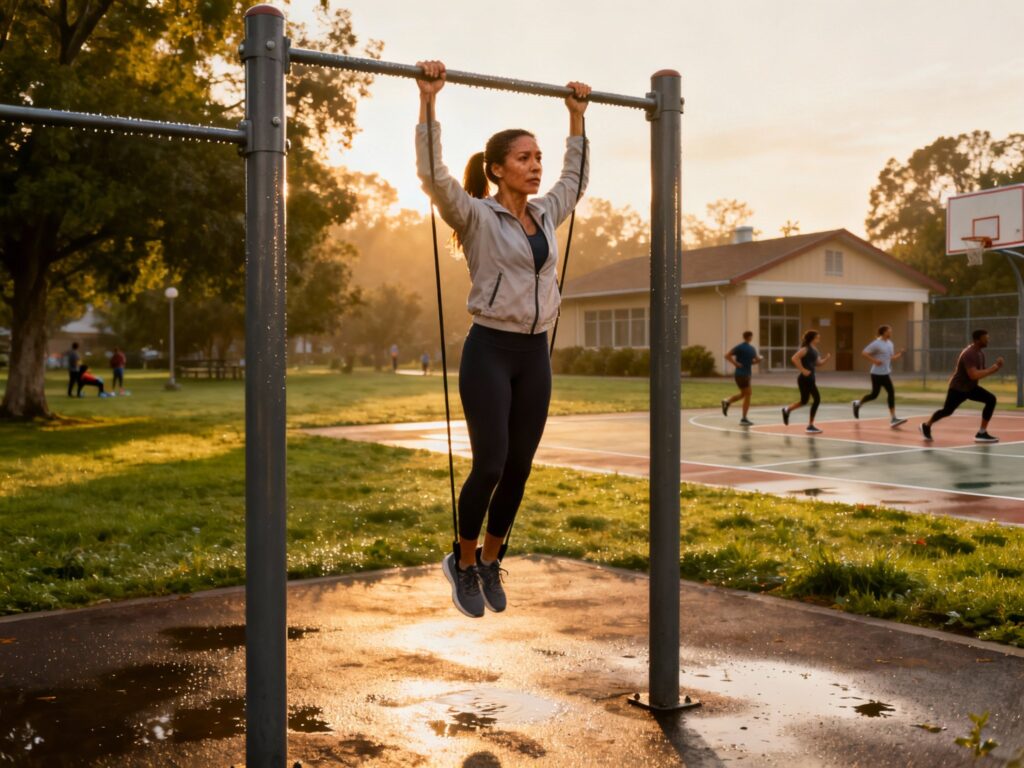
Start where you are. Not where your most motivated friend is. Not where you were five years ago. Right here. If you can commit to 20–30 minutes, two or three days a week, you can build momentum quickly.
I like to think in phases—not to be fancy, but to stay honest.
I reached a point where my major muscle groups stopped cooperating after I sabotaged my fitness progress for a long time. I can no longer manage weight machines like I used to and establishing a consistent exercise time was a struggle. You know what I did? I forgot how I used to be in my fitness journey to lessen my disappointments and accepted the fact that I had to start slowly again, from my current situation.
I started simple until I progressed to moderate aerobic activity. Did I burn calories? Of course. Did I do strength training to befriend my major muscle groups again? Eventually, yes. But my physical fitness journey become more meaningful once I focused more on the health benefits it bring. I become more motivated to include regular exercise in my daily schedule.
You see, fitness doesn’t need to be complex and fancy. Just start slowly. Start what feels fun may it be walking, swimming, yoga, or lift weights. Start with resistance bands and get those calf raises when you wake up. And don’t forget the most important factor to incorporate in your daily schedule – nutrition.
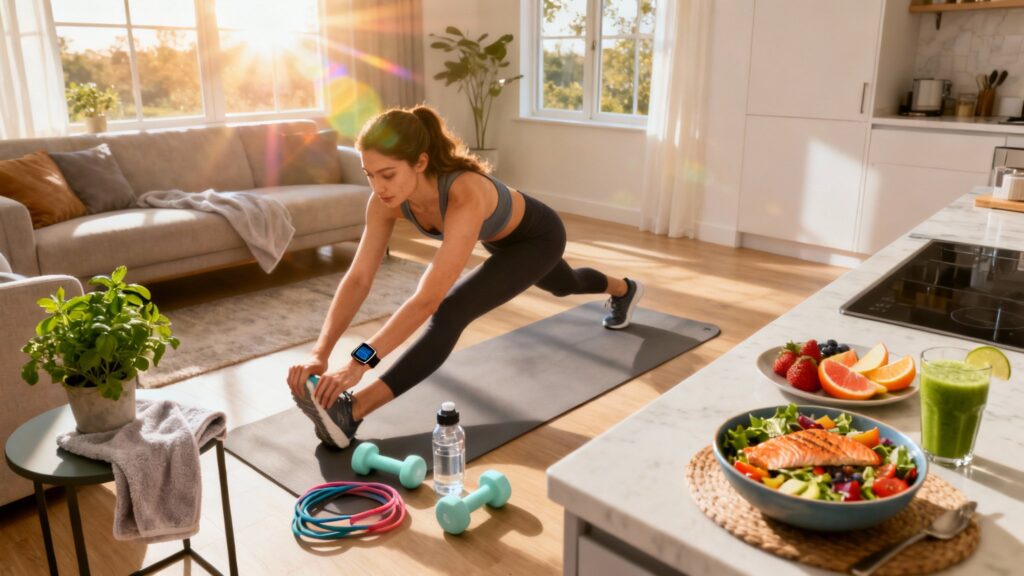
Beginner Phase (Weeks 1–4): Build Your Base
We’re teaching your body the major patterns and asking the joints to play nice.
- Modified Pushups (wall or knees): keep a straight line from head to knees/hands.
- Chair‑Assisted Squats: sit back, light touch, stand tall.
- Glute Bridges: squeeze, don’t sling—hold the top for a beat.
- Forearm Planks (15–30s): ribs down, glutes lightly on.
- Standing Marches: tall posture, slow control.
- Dead Bugs: opposite arm/leg with low back gently kissing the floor.
Structure: 2 sets of 8–12 reps (holds 15–30s), 45–60s rest, 2–3 sessions per week.
If a move feels too easy, slow it down and own the range. If it feels wobbly, shorten the set and retest next session. Progress is still progress.
Intermediate Phase (Weeks 5–10): Add Range and Control
You’ve earned harder variations, not because you suffered, but because you practiced.
- Standard Pushups (elbows ~45°), full‑body tension.
- Full‑Depth Bodyweight Squats, heels grounded.
- Reverse Lunges, gentle knee kiss, stand tall through the front heel.
- Pike Pushups, hips high, head toward the floor.
- Single‑Leg Glute Bridges, keep the pelvis level.
- Side Planks (30–45s), long line ear‑to‑ankle.
- Mountain Climbers, smooth and steady.
Structure: 3 sets of 10–15 reps, 30–45s rest, 3–4 sessions per week.
This is when daily life feels different. Stairs shrink. Posture improves without you thinking about it. Your jeans fit better and your back thanks you.
Advanced Phase (Weeks 11+): Skill and Power (Optional, Fun)
Not mandatory, but very rewarding if you’re curious.
- One‑Legged Pushups (or feet‑elevated pushups as a bridge).
- Jump Squats and other low‑impact plyo variants (soft landings).
- Traveling Lunges in multiple directions.
- Wall‑Assisted Handstand Holds/Pushup Progressions.
- Single‑Arm Planks (reach forward or out to side).
- Burpee Variations (clean mechanics, not chaos).
- Turkish Get‑Ups (start bodyweight, then light weight).
Structure: 3–4 sets of 6–12 reps, 60–90s rest, 4–5 sessions per week if capacity and recovery allow. Quality is the point; fatigue is not the trophy.
Pro tip from my own over‑eager past: don’t rush handstand progressions. Shoulders have very clear opinions.
Stay Motivated: A Weekly Template That Survives Real‑World Chaos
I like plans that can bend without breaking. Use this as a living outline.
Monday: Full‑Body Foundation
- Warm‑up: 5 minutes (joint circles, light hinges, marching)
- Circuit: Squats → Pushups → Glute Bridges → Forearm Plank
- 2–3 rounds, controlled pace
- Cool‑down: 5 minutes mobility
Wednesday: Upper + Core
- Warm‑up: 5 minutes
- Pushups → Pike Pushups → Side Planks → Dead Bugs
- Add a short mountain climber finisher if you want
- Cool‑down: 5 minutes
Friday: Lower Body + Cardio Poppers
- Warm‑up: 5 minutes
- Squats → Reverse Lunges → Single‑Leg Bridges
- Finish with squat pulses or jump squats (soft landings)
- Cool‑down: 5 minutes
Saturday (optional): Active Recovery
- Easy walk, gentle mobility, or a short yoga flow
Prefer smaller bites? Do 20 minutes most days instead of 40 every other day. Body fitting exercise adapts to you.
Physical Activity Guidelines: How to Progress Without Burning Out
Every 2–3 weeks, nudge one variable:
- Add reps (8 → 12) or sets (2 → 3).
- Trim rest (60s → 45s).
- Level up the variation (knees → standard pushups).
- Add tempo (3‑second lowers, 1‑second pause).
- Pair moves (squat‑to‑press with light dumbbells if you have them).
A simple eight‑week arc:
- Weeks 1–2: Learn patterns, moderate effort.
- Weeks 3–4: Add reps or cut a little rest.
- Weeks 5–6: Add a set or level up a variation.
- Weeks 7–8: Sprinkle a finisher (a mini EMOM, or short intervals).
The nerdy headline: volume and consistency drive visible change; smart intensity raises your ceiling for strength (Schoenfeld 2019; Mangine 2015). The human translation: keep showing up, make it a tad harder, and trust the process.
Gear That Helps (But Won’t Take Over Your Living Room)
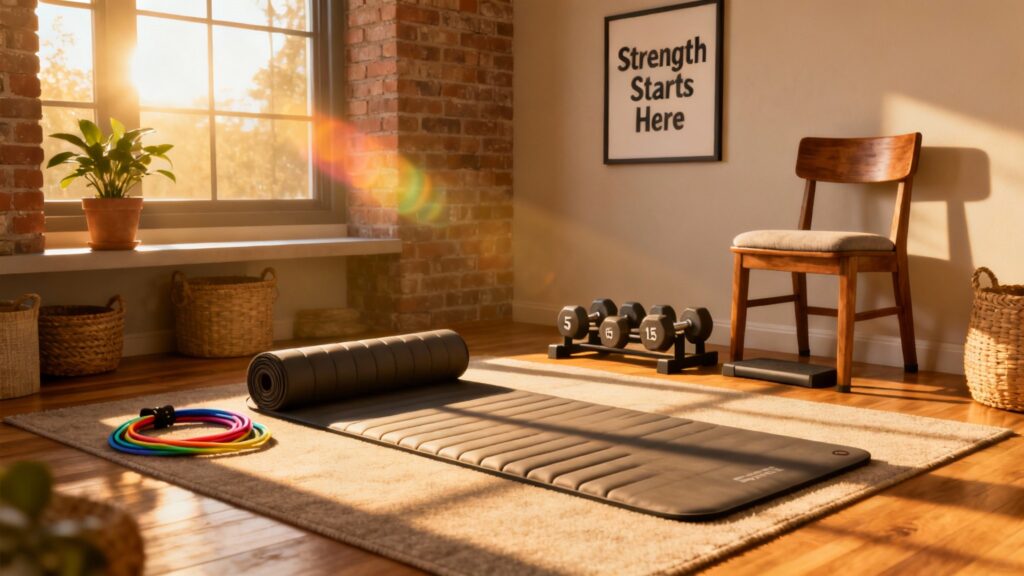
You don’t need a home gym. You need a clear patch of floor and a plan.
- A Mat: Comfort matters—your knees will vote yes.
- Resistance Bands: Tiny, portable, perfect for pulling patterns at home.
- Light Dumbbells (optional): 5–15 lb goes a long way for presses, rows, and loaded squats.
- Sturdy Chair/Bench: Inclines, step‑ups, dips, and single‑leg work.
DIY is welcome: water bottles as weights, a book‑stuffed backpack, towels as sliders, stairs as built‑in cardio. Fancy equipment is cool; consistency is cooler.
The Sneaky Mistakes That Stall Progress (I’ve Made Them All)
Racing Your Reps
Slow down. Control the lowers. Own the top. Time under tension turns “light” into “effective.” Five crisp pushups beat 15 wobbly ones—always.
Skipping Warm‑ups and Cool‑downs
I get it. But five minutes on both ends will make your session feel better and your body recover faster. Consider it respect for your joints.
Copy‑Pasting the Same Workout for Months
Your body adapts (which is great), but then it needs a new nudge. Change one thing every couple of weeks and you’ll keep climbing.
Training Only What You See in the Mirror
Glutes, hamstrings, upper back, obliques—your posture and joints depend on them. Train the back of you like it’s your job.
Expecting Movie‑Trailer Results in Two Weeks
The calendar is your friend. You’ll feel changes first (sleep, energy, stairs), often by week three. Visible changes commonly follow by weeks six to eight, with bigger shifts by 12–16. Stay the course.
Overdoing It Because Motivation Is High
I adore your enthusiasm. Also: rest days are where your gains cash out. Keep at least one day between similar sessions, and let active recovery be your ally.
How to Measure Success Without Losing Your Mind
The scale can be moody. Use friendlier metrics:
- Photos in the same light/pose every 2–4 weeks.
- Tape measurements (waist, hips, thighs, arms) monthly.
- Rep/hold benchmarks: perfect pushups, plank time, full‑range squats.
- Functional wins: carrying everything inside in one trip, stairs without the soundtrack, back feels good after sitting.
- Energy and sleep: underrated, wildly meaningful.
Re‑test a couple of moves every month. Watching the numbers inch up is the kind of quiet confidence that sticks.
Three Plug‑and‑Play Workouts (Steal These)
Beginner Full‑Body (25–30 minutes)
- Warm‑up: 3–5 minutes (circles, hinges, marching)
- Circuit (2–3 rounds):
- Chair‑Assisted Squats x 10–12
- Wall or Knee Pushups x 8–10
- Glute Bridges x 12–15 (2‑sec squeeze)
- Forearm Plank x 20–30s
- Rest 60–75s between rounds
- Cool‑down: 5 minutes
Intermediate Strength + Core (35–40 minutes)
- Warm‑up: 5 minutes
- Tri‑Set (3 rounds):
- Bodyweight Squats x 12–15
- Standard Pushups x 8–12
- Single‑Leg Glute Bridges x 8–10/side
- Rest 45s
- Core Finisher (2 rounds):
- Side Plank x 30–40s/side
- Dead Bugs x 8–10/side
- Optional Conditioning: Mountain Climbers 20s on / 40s off x 5
- Cool‑down: 5 minutes
Advanced Power + Control (40–45 minutes)
- Warm‑up: 5 minutes
- Pair (4 rounds):
- Jump Squats x 6–8 (soft landings)
- Pike Pushups x 6–10
- Rest 60–75s
- Skill Block (3 rounds):
- Wall Handstand Hold x 10–20s
- Single‑Arm Plank x 10–20s/side
- Optional Conditioning: Burpees x 8–12, 2–3 sets, rest as needed
- Cool‑down: 5–7 minutes mobility
On low‑energy days, cut a round and slow the tempo. On high‑energy days, add a set. Body fitting exercise is a conversation, not a verdict.
Food, Sleep, and Sanity (Your Multipliers)
You don’t need a spreadsheet diet. You do need enough protein to repair and grow (a practical range is about 0.7–1.0 grams per pound of body weight), plenty of colorful plants, and water so your joints don’t sound like a door hinge in a haunted house. Sleep is the great performance enhancer—when I shortchange it, every lunge feels heavier (and so does my mood). Aim for a consistent window most nights; your training quality will pay you back.
Research
If you like knowing the “why,” here’s the readable recap:
- More weekly working sets (volume) tends to grow muscle even when strength gains look similar across groups (Schoenfeld 2019).
- Adaptations happen across a range of reps and loads when effort and design are solid (Schoenfeld 2021).
- Heavier lifting can boost 1RM in trained folks; lighter/moderate work can still build with effort and volume (Mangine 2015).
- Functional circuit training with low or moderate loads works for lean mass, strength, and fat loss when volume’s equated (Kapsis 2022).
FAQs (Fast, Friendly Answers)
How long until I see results from body fitting exercise?
You’ll probably feel better—and stronger—within 2–3 weeks. Visible changes often show up around weeks 6–8, with bigger shifts by 12–16 if you’re consistent.
Can I do body fitting exercise every day?
Move daily, yes. Train hard most days, no. Give muscle groups 24–48 hours before you hit them hard again. Walks and mobility on off days help you recover.
Do I need equipment?
Nope. Your body is the star. Bands and light dumbbells add variety, especially for pulling, but they’re optional.
What if I can’t do a standard pushup?
Start with wall or knee pushups. Perfect, easier reps build strength faster than grimacing through saggy “real” ones. You’ll get there faster (and safer).
How do I avoid plateaus?
Every 2–3 weeks, tweak one variable: reps, sets, rest, or the exercise variation. Keep a simple log so you can see progress even when the mirror is being stubborn.
The Bottom Line: Let Body Fitting Exercise Be Your Default
If I could hand you one gift, it’d be the feeling you get after a month of consistent body fitting exercise. You stand a little taller. Your energy hums. Stairs stop auditioning as a cardio test. And here’s the kicker: it all fits inside a life you already have.
Start with two or three movements, two or three days a week. Breathe. Move well. Progress a little. Laugh when you wobble. Celebrate when you don’t. Body fitting exercise isn’t a makeover montage; it’s a steady friendship with your future self. And that future self? They’re strong, capable, and surprisingly excited to carry all the groceries in one trip.






